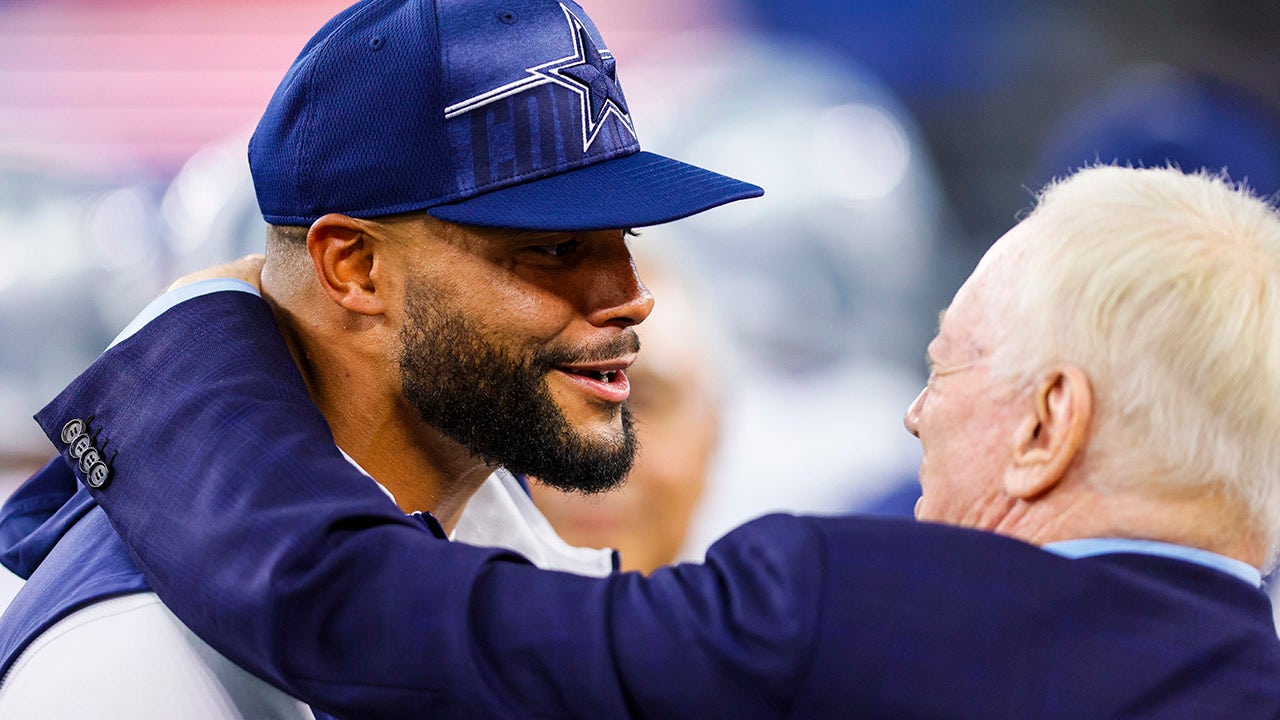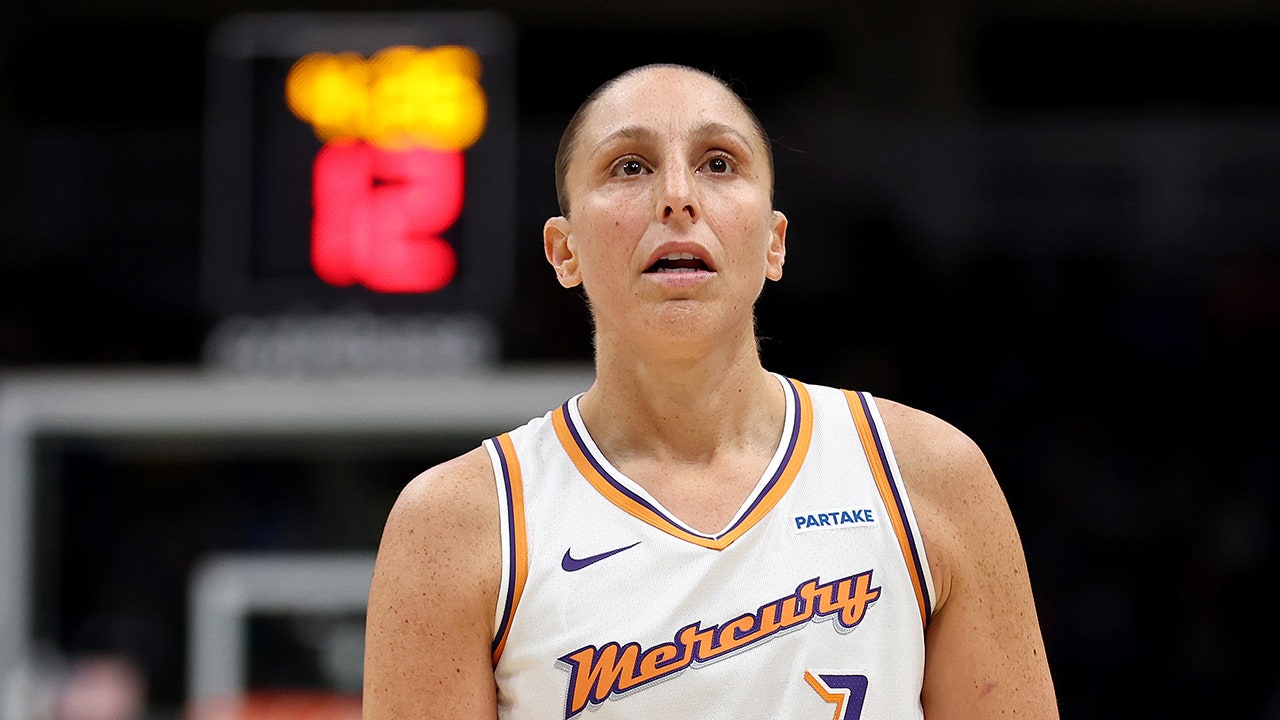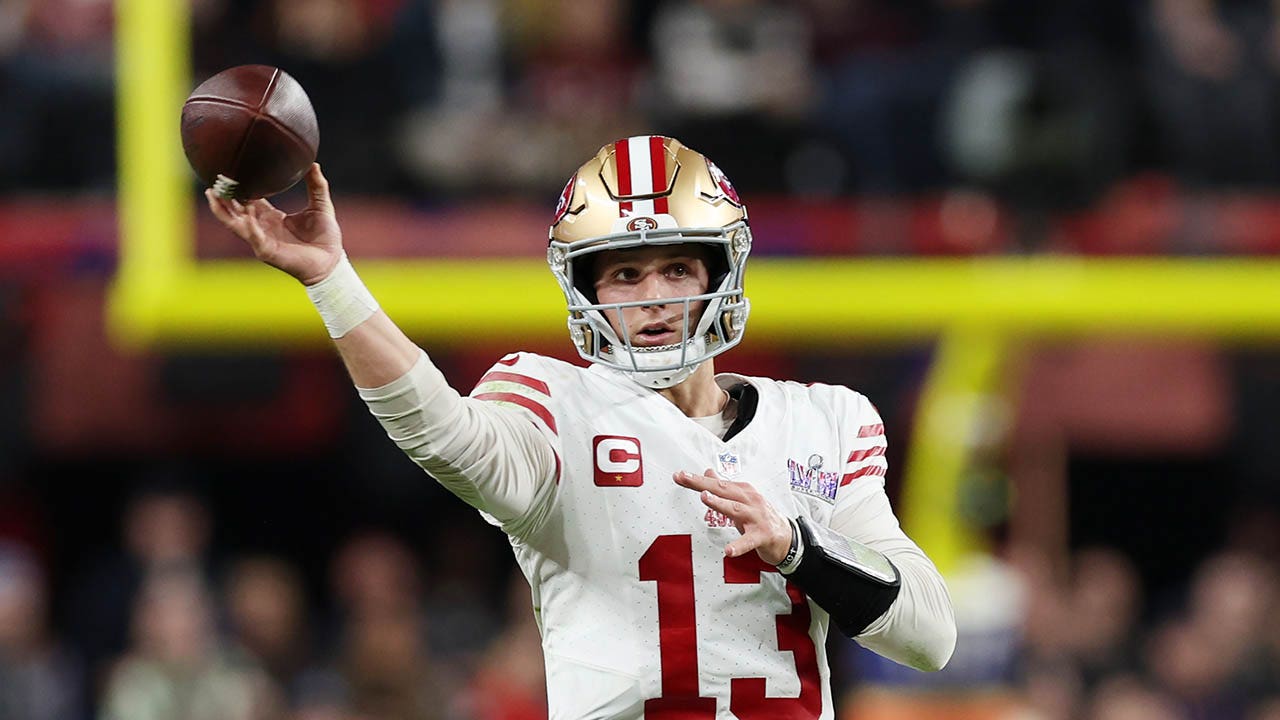Margaret Abbott, the first American woman to win an Olympic event, died at age 76 without knowing of her pioneering feat.
The 1900 Games in Paris were the first that allowed women to compete, but also so nascent and unorganized that Abbott spent the rest of her life under the impression she’d merely won a local golf tournament. It didn’t help that her prize was a gilded porcelain bowl and not a gold medal.
Paula Welch, now professor emeritus at the University of Florida, unearthed Abbott’s milestone decades later. It was a revelation that even surprised Abbott’s son, Philip Dunne.
“It’s not every day that you learn your mother was an Olympic champion, 80-odd years after the fact,” Dunne wrote in a 1984 Golf Digest article.
There will be no mistaking such epic moments for female competitors at the 2024 Paris Games. If Simone Biles, the most decorated gymnast in history, triumphs again, if charismatic sprinter Sha’Carri Richardson breaks away from the pack, if world-record holder Katie Ledecky adds to her collection of seven swimming golds, they’ll relaunch as international media sensations by daybreak.
The transformation underscores just how much women have reshaped the Olympics since the fledgling 1900 competition, when only 22 of the 997 athletes were female. The Winter and Summer Games of long ago have emerged into platforms where the women are household names just as much as the men. The 2024 Paris Games are set to be the first to feature as many female athletes as male.
For most of the 1980s and ’90s, few female athletes in the United States were as famous as Jackie Joyner-Kersee. The stylish, personable star of USA Track & Field set numerous world records and won six Olympic medals, including three golds.
She understands the power of this juncture in women’s sports history. And in grand Olympic style, she’s ready to pass the torch.
“What I love is the respect that I see from this generation,” Joyner-Kersee, 62, told The Athletic. “But you also want them to have their moments. I think that’s very important. My era was my era. I did what I did, but what can I pass on to you that can help you?
“With (the) Olympics around the corner, with what Sha’Carri Richardson was able to do becoming world champion, and Sydney (McLaughlin-Levrone) running under 51 seconds in the 400 hurdles, the excitement around women’s athletics (is growing).”
Biles, who has 37 Olympic and World Championship gymnastics medals, headlines an impressive group of U.S. female athletes headed to Paris. There also is Richardson, Ledecky and gymnastics star Suni Lee, as well as the U.S. women’s basketball, water polo and soccer teams.
Joyner-Kersee knows just how life-changing Olympic glory can be.
“Every time I was on the podium,” she said, “I always thought about my community of East St. Louis (Ill.), and then also about the coaches who believed in me when I didn’t believe in myself.”

Jackie Joyner-Kersee dominated in the heptathlon Olympic event in the 1980s and ’90s. (H. Darr Beiser / Imagn Content Services, LLC via USA Today)
Her gratitude extends to an even earlier Olympic sensation. Wilma Rudolph was the breakout star of the 1960 Summer Games in Rome, where she became the first American woman to win three track and field gold medals (100 meters, 200 meters and the 400-meter relay) at a single Olympics. She became a household name in Italy, along with other male U.S. Olympic standouts such as boxer Muhammad Ali (then Cassius Clay), basketball star Oscar Robertson and decathlete Rafer Johnson.
Rudolph made numerous TV appearances and earned a slew of honors, including the Associated Press Female Athlete of the Year Award in 1960 and 1961. She retired from competition in 1962 and went on to teach, coach and run a community center, among other endeavors, though her Olympic accomplishments on the track remained her best known.
Her fame put her in a position years later to offer advice to Joyner-Kersee. That conversation took place after the 1984 Summer Olympics in Los Angeles, after Joyner-Kersee left with a silver medal in the heptathlon and a whiff of disappointment. She narrowly missed out on the gold with which she later would be synonymous.
Rudolph, a broadcaster during those 1984 Games, took Joyner-Kersee under her wing, and the two became close in the ensuing years. Joyner-Kersee said Rudolph’s advice on how to handle opportunities outside athletics helped her grow into a leader on and off the track — though she didn’t fully understand it at the moment.
“I’m hearing this (advice), and in my mind, it’s like, ‘What is she going on about?’” Joyner-Kersee said. “But now that you live it? I realized she was someone who was preparing me for what she knows is going to happen.”
Nearly 30 years later, Joyner-Kersee was able to fill that mentor role for an up-and-coming Olympic athlete. Since falling short of qualifying for the U.S. team in the heptathlon after a fall in the Olympic Trials before the 2020 games, Anna Hall has received regular encouraging calls from Joyner-Kersee while preparing for the 2024 Games. Hall recently qualified for the Paris Games and is considered a favorite to win gold in Joyner-Kersee’s signature event.
Joyner-Kersee is among the seminal figures profiled in a recently published book by Bonnie-Jill Laflin about the trendsetters who paved the way for this watershed era in women’s athletics. “In a League of Her Own: Celebrating Female Firsts in Sports” features chapters based on interviews with tennis star Billie Jean King, basketball groundbreaker Nancy Lieberman, gymnast Mary Lou Retton, race car driver Danica Patrick, former Oakland Raiders CEO Amy Trask and others who broke barriers for women in athletics. Several of the stars look back to their inspirations, citing the impact of women such as Rudolph and multisport athlete Babe Didrikson Zaharias.
For Retton, who in 1984 became the first American gymnast in history to win an Olympic individual all-around gold, her inspiration was Nadia Comăneci. Retton praised the 1976 gold medalist, the first to earn a perfect 10.0 in Olympic history.
“Of course it was Nadia,” Retton said in the book. “That’s when it clicked for me. I was glued to the television set watching this little girl named Nadia from this different country, Romania. She was doing these amazing things with her body, and I’m like, ‘That’s it. That’s what I want to do, and there’s a name for it — it’s called gymnastics.’”

Mary Lou Retton became the first American gymnast to win an Olympic individual all-around gold in Los Angeles in 1984. (Jerry Cooke / Sports Illustrated via Getty Images)
Laflin, a San Francisco native, wrote the book to ensure future generations understood that today’s magazine covers and boffo TV ratings were a long time coming. “I wish I’d had a book like this to understand that it’s not going to be easy,” she told The Athletic. “There are going to be struggles, and you’re not going to be accepted. I think those are the things that women are now able to see and have a little bit of guidance to try to navigate through it.”
Because of Joyner-Kersee’s unique blend of talents, there is arguably no one better positioned to appreciate the current boom of interest in women’s sports, with college basketball dominating the national narrative more than it ever has, the WNBA increasing in popularity, college volleyball matches setting attendance records and Team USA preparing for what might be the most watched Olympics in a decade after the 2020 Games were heavily affected by the COVID-19 pandemic.

GO DEEPER
Exposure, popularity and stars. Is college softball on the brink of a breakthrough?
Melissa Stockwell grew up wanting to be an Olympic gymnast after being inspired by the biggest star of her era, Retton. She told The Athletic that at youth gymnastics meets, she would envision standing on the floor listening to the national anthem after scoring a perfect 10.0.
Stockwell, who also got a chapter in Laflin’s book, had the chance to represent her country on the podium, but her triumph came as a Paralympic triathlete after she, a former U.S. Army officer, became the first female American soldier to lose a limb in active combat. Stockwell’s vehicle was hit by a roadside bomb in Iraq in 2004.
Six months into her stint at the Walter Reed National Military Medical Center in Maryland, she noticed a flyer on the wall promoting an informational session about the Paralympic Games. She attended the session led by Persian Gulf War veteran John Register, a two-time U.S. Paralympian who reinvented himself as a competitive athlete after becoming a leg amputee in 1994.
“There were a few of us in the room, but it felt like he was talking directly at me,” Stockwell said. “I left that room and somehow, some way, knew I wanted to be a Paralympian and represent our country.”
Stockwell eventually became the first Iraq War veteran to qualify for the Paralympic Games, in swimming, in 2008. She later captured a bronze medal as a triathlete at the 2016 Games and stood on the podium with two other Americans — on the profound date of Sept. 11.
“It will go down as one of the greatest moments of my life,” Stockwell said. “Obviously, it’s Sept. 11 and I’m wearing that Team USA uniform. … Being on that podium is a moment that I will never, never forget.”
Joyner-Kersee’s thoughts of her times on the medalists podium centered on those who supported her journey to Olympic glory. Since her retirement from competitive athletics, she has tried to pay back those who helped her reach her dreams, dedicating her life to training the next generation of athletes and leaders through her Jackie Joyner-Kersee Foundation. She also supports athletes trained by her husband, legendary track and field coach Bob Kersee.
“Through sports, you learn a lot about leadership, the teamwork and how all these skills are transferable beyond the playing field,” she said. “You learn to appreciate one another, but you also learn a lot about what it is you want to do. You learn about your own self-confidence, but also, how can I get someone else to feel that same way?”
The 2012 Summer Games in London were the first in which women competed in all the sports on the program. Since 1991, any new sport seeking to join the Olympic program must have women’s competitions.
Many Olympic champions feel compelled to keep the momentum going. Joyner-Kersee believes the growth of women in sports has made an impact well beyond the playing field.
“You look at women in athletics from the standpoint that you look at the leadership role — they aren’t just players now,” she said. “You are looking at them as leaders of universities — athletic directors — and being at the table to brainstorm.
“You bring other people in to really understand that someone might not be the best athlete, but they bring something that’s very tangible, that is going to make a company a huge success.”
(Illustration: Eamonn Dalton / The Athletic; photos: Jamie Squire and David Madison / Getty Images)






